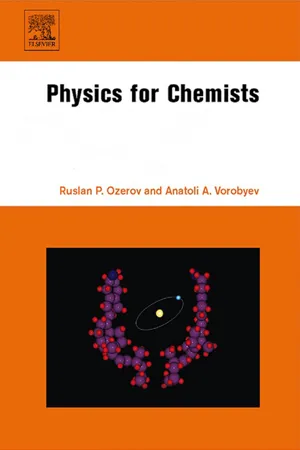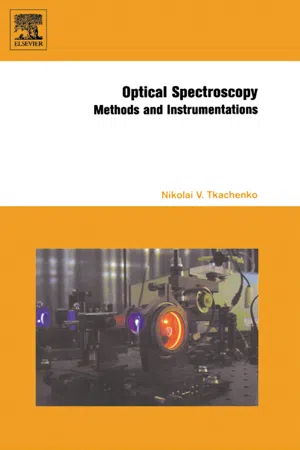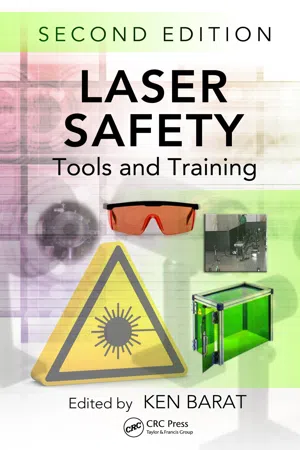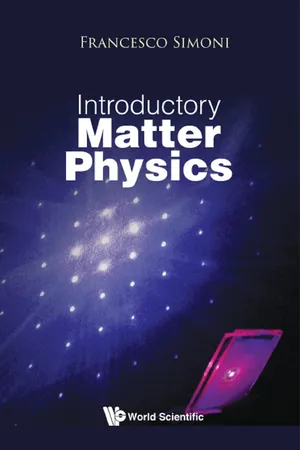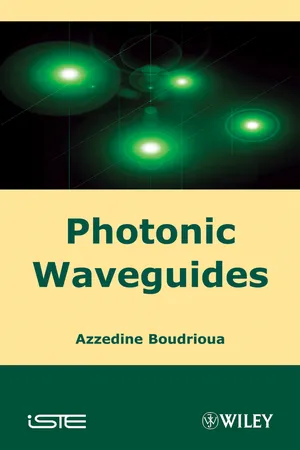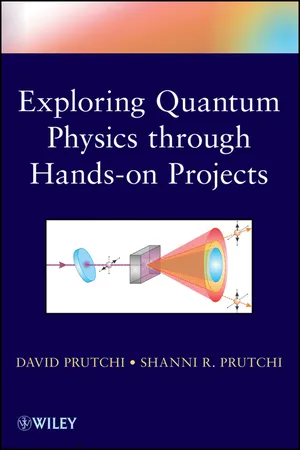Physics
Wave Optics
Wave optics is a branch of optics that describes the behavior of light in terms of waves. It focuses on phenomena such as diffraction, interference, and polarization, which cannot be explained by geometric optics. Wave optics provides a more comprehensive understanding of light and its interactions with matter, leading to applications in various fields such as microscopy, astronomy, and telecommunications.
Written by Perlego with AI-assistance
Related key terms
Related key terms
1 of 4
Related key terms
1 of 3
8 Key excerpts on "Wave Optics"
- eBook - ePub
- Galen C. Duree(Author)
- 2011(Publication Date)
- For Dummies(Publisher)
Part I Getting Up to Speed on Optics FundamentalsIn this part . . .Optics is the study of light, so Part I is designed to provide you with the basic properties of light and some of the mathematics you need in order to use the various equations in the rest of the book. I explain the basic wave properties and particle properties of light, the experiments that caused the change from one model to the other, and the remarkable discovery of photons. You also find out about the three ways to produce light and the three basic processes that you can use to make light go where you want it to go. All of optics is based on the properties and models presented in this part, so they form the basis for all the other phenomena and devices you discover in this book.Passage contains an image
Chapter 1 Introducing Optics, the Science of Light In This ChapterUncovering the basic properties of lightGetting a glimpse of optics applicationsLight is probably one of those things that you take for granted, kind of like gravity. You don’t know what it is or where it comes from, but it’s always there when you need it. Your sight depends on light, and the information you get about your environment comes from information carried by the light that enters your eye.Humans have spent centuries studying light, yet it remains something of a mystery. We do know many properties of light and how to use them to our benefit, but we don’t yet know everything. Therefore, opticsIlluminating the Properties of Lightis the continuing study of light, from how you make it to what it is and what you can do with it. In fact, optics consists of three fields: geometrical optics, physical optics, and quantum optics. As we learn more about light, we find new ways to use it to improve our lives. This chapter shines a little, well, light on light.Because of an accidental mathematical discovery, light is called an electromagnetic wave,a distinction indicating that light waves are made up of electric and magnetic fields. You’re probably used to thinking of light as the stuff your eyes can detect. For many people who work with light on a regular basis, however, the term - eBook - ePub
- Ruslan P. Ozerov, Anatoli A. Vorobyev(Authors)
- 2007(Publication Date)
- Elsevier Science(Publisher)
6Wave Optics and Quantum–Optical Phenomena
Publisher Summary
All sets of optical phenomena comprise three general parts: geometrical, wave, and physical optics. This chapter focuses on Wave Optics. To make an atom emit an electromagnetic wave, it is necessary to excite the atom—that is, to transfer it to a higher energy state with a short lifetime. In the ground state, an atom can exist for an indefinitely long time without changing its state. However, an atom can be transferred from the ground state to some other state with higher energy—that is, to the excited state with a limited lifetime. Electromagnetic waves do not require a medium to propagate. Different kinds of electromagnetic waves are produced by different emitters. As a rule, an emitter does not emit a single wave but a bundle of waves. An emitter produces waves by changing its state. Each specified wave is characterized by some properties. So, a beam consists of an enormous amount of particular waves having a definite length. Electric interactions are stronger than magnetic ones. In other words, all physiological, photochemical, and photoelectric actions of light are caused by the operation of an electric field. Each light beam consists of many wavetrains with particular orientation of the plane of oscillation—that is, polarizations.6.1 PHYSICS OF ELECTROMAGNETIC OPTICAL WAVES
Wave Optics deals with the propagation of light waves and their interaction with matter.A schematic drawing of electromagnetic waves was given at the end of Chapter 5 (Figure 5.43b ) and their main characteristics were summarized (Table 5.3 ). The frequencies (the wavelength) corresponding to the range of waves visible to the naked eye are presented in Figure 6.1 : relative eye sensitivity S is depicted which reflects the property of the human eye. Two areas adjoin the optical range: infrared (IR) and ultraviolet (UV) radiation (see Table 5.3 ). Remember also the ratio υ = c /n between light velocity in a vacuum c and in some isotropic media υ . n being the refraction index, n =μ ɛ - eBook - ePub
Optical Spectroscopy
Methods and Instrumentations
- Nikolai V. Tkachenko(Author)
- 2006(Publication Date)
- Elsevier Science(Publisher)
Chapter 2Optics and Optical Devices
All optical spectroscopy instruments are optical devices in that they use light sources, manipulate the light and measure the light. Optics and optical devices have a long history going back to 17th century when the wave and corpuscular light theories were developed by two famous scientists Christian Huygens and Isaac Newton. Nowadays optics is a well developed branch of natural sciences with numerous subtopics, application fields and wide range of instruments and tools available commercially. Giving its importance for understanding the principles of the optical spectroscopy instruments this Chapter will discuss a few general topics, such as interference and interferometers, diffraction and diffraction resolution limits, monochromators, and calculation of optical systems in geometrical optics approximation. However, this is rather fragmentary selection of optics subjects and readers are advised to refer to general optics text books for more complete study of the subject.1The photon, being a quantum object, has a controversy of wave and particle presentations. Also there are unified theories, it is common to use wave theory to discuss interference or diffraction properties of the light, and to present photons as particles for ray tracing or to study their interactions with matter. Accordingly, the wave presentation of light will be discussed at first, following by its application to interference and diffraction. In the last section we shall switch to geometrical optics to discuss calculations of beam tracing in optical systems.2.1 Waves
2.1.1 Wave equationIn a simple one dimension case (1D) the wave equation is(2.1)where f = f (x, t ) is a function of coordinate x and time t , and c is a constant. For example a string vibration can be described by the wave equation, then f (x, t ) can be the string displacement at position x. A general solution of the equation is(2.2)Where u and v are any functions of a single parameter. These functions present two waves propagating in opposite directions: the wave u (ct – x ) propagates in direction of increasing x , and the wave v (ct + x ) in decreasing x - eBook - ePub
Laser Safety
Tools and Training, Second Edition
- Ken Barat, Ken Barat(Authors)
- 2017(Publication Date)
- CRC Press(Publisher)
A wave encountering a large island, for example, does not bend around it so there is a shadow of the island. It is only when there are multiple waves that can interfere or smaller objects for which the bending of waves is observed that describing waves in terms of rays breaks down. This is exactly the situation encountered in the wave theory of light. All of geometrical optics can be derived from the wave theory as an approximation that is perfectly adequate in many situations. In this chapter, with a few exceptions, we need only this approximation. The wave theory of light has been very successful in predicting the behavior of light with high accuracy. Nevertheless, there is still more to the story of light. Near the beginning of the twentieth century, a number of observations of the interaction of light with atoms and electrons were inconsistent with the wave theory. This led to the quantum theory of light. In this theory, light is composed of tiny particles of energy called photons. Although it might seem that photons and waves are completely different concepts, the quantum theory shows that they are very closely related. Just like the ray theory can be shown to be an approximation of the wave theory, the wave theory itself is an approximation of the quantum theory. The quantum theory of light is beyond the scope or needs of this book. A few concepts from this theory are discussed in the final section of this chapter, regarding typical optical devices in laser laboratories. Scattering, Absorption, Reflection, And Refraction Of Rays With this background of how scientists today understand light, let us return to the ray picture, which is also called geometrical optics, and study the behavior of rays after they leave the source that generates them. Other than simply traveling in a straight line forever, there are only a few other fates that can befall a ray within the geometrical optics model - eBook - ePub
- Francesco Simoni(Author)
- 2018(Publication Date)
- WSPC(Publisher)
Fig. 1.22 .These results are very important, since they allow distinguishing wave from particle propagation. On the other hand, they also point out that when λ ≪ 2a the difference in the behavior of waves and particles is difficult to observe. In this case, we do not need to describe light as waves, but we can account for several optical phenomena just by tracing “rays.” The ray is an oriented line whose direction corresponds to the wave vector direction of the associated wave; it undergoes linear propagation and follows the laws of reflection and refraction. This is the regime of geometrical optics, which can be used to describe the basic behavior of several optical devices, from simple lenses to optical instruments such as microscopes and telescopes. In this case, any effect not well explained under this approximation is treated as an optical aberration of the system. However, a deeper understanding of the working conditions of an optical system always requires a full electromagnetic treatment.On the other hand, the occurrence of diffraction when λ ∼ 2a can be considered the signature of wave propagation. In other words, the observation of a diffraction phenomenon tells us that a wave must be involved in it. This is a very remarkable statement, since it has been a basic demonstration of the wave character of the elemental particles, as we will discuss in the next chapter.The given example of an aperture limiting the wave front is actually the classical and most evident case for diffraction. However, this phenomenon is a basic one related to wave propagation occurring when any propagation parameter of the wave is locally modified. In order to understand this concept, it is better to write Eq. (1.168) in a more general way:where E0 (ξ, η) is the field incident on the plane ξη and t(ξ, η) represents the transmission function at this plane. This means that t(ξ, η) = 1 in the whole plane for a free traveling wave, while in the previous case of an aperture blocking most of the wave front t(ξ, η) = 1 in the aperture area and t(ξ, η) = 0 elsewhere, thus reducing Eq. (1.172) to Eq. (1.168). In this way, we can consider Eq. (1.172) the general expression for the Fraunhofer diffraction integral observed at a focal plane of a converging lens whose focal length is f - eBook - ePub
Photonic Waveguides
Theory and Applications
- Azzedine Boudrioua(Author)
- 2013(Publication Date)
- Wiley-ISTE(Publisher)
Chapter 1Optical Waveguide Theory
Optical waveguides are structures with three layers controlling light confinement and propagation in a well defined direction inside the central layer (Figure 1.1 ).Light confinement is carried out by successive total reflections on the two interface guides – substrate and guide – superstrate.Figure 1.1. Planar optical waveguideLight propagation is governed by an interference phenomenon which occurs inside the guide between two waves; one of them undergoes two successive total reflections. For a better understanding of the guided wave propagation, we will recall the main principles of these two phenomena, total reflection and interference, inside a transparent plate with parallel faces.1.1. Principles of optics
1.1.1. Total reflection phenomenonLet us consider an interface separating two mediums 1 and 2, which are dielectric, lossless, homogenous and isotropic with refractive indices n1 and n2 , respectively. An electromagnetic wave propagates from 1 to 2 with an angle of incidence θi related to the normal of the interface (Figure 1.2 ).The electric field of the incident wave is given by:Figure 1.2. Reflection on an interface (medium 1/medium 2)[1.1][1.2]is the wave vector in the vacuum (λ: wavelength in the vacuum) and Ei0 is the incident wave amplitude. The electric fields of the reflected and transmitted waves can be written:[1.3][1.4]In addition, refraction law is given by:[1.5][1.6]In the case of n1 > n2 , there is an incident angleθl, as:[1.7]Forθi>θl, the incident wave is totally reflected into medium 1 (total reflection) and the angleθtof the transmitted wave is complex [Bor 1999, War 1988]:[1.8]From [1.4 ], the transmitted wave can be written as:[1.9]This wave propagates in the Oz direction with an amplitude exponentially decreasing in the Ox direction. This is called an evanescent wave. Also, according to Fresnel’s formulae, the considered wave undergoes a phase shift compared to the incident wave, given by [Bor 1999]: - David Prutchi(Author)
- 2012(Publication Date)
- Wiley(Publisher)
1LIGHT AS A WAVE
Before we get into quantum physics, let’s understand the classical view of light. As early as 100 C.E., Ptolemy—a Roman citizen of Egypt—studied the properties of light, including reflection, refraction, and color. His work is considered the foundation of the field of optics. Ptolemy was intrigued by the way that light bends as it passes from air into water. Just drop a pencil into a glass of water and see for yourself!As shown in Figure 1a , the pencil half under the water looks bent: light from the submerged part of the stick changes direction as it reaches the surface, creating the illusion of the bent stick. This effect is known as refraction, and the angle at which the light bends depends on a property of a material known as its refractive index.Figure 1 Refraction of light: (a) A pencil dipped in water appears distorted because refraction causes light to bend when it passes from one substance into another, in this case from air to water. (b) A laser pointer clearly demonstrates Snell’s law of diffraction.In the 1600s, Dutch mathematician Willebrord Snellius figured out that the degree of refraction depends on the ratio of the two materials’ different refractive indices. Most materials have a refractive index greater than 1, which means that as light enters the material from air, the angle of the ray in the material will become closer to perpendicular to the surface than it was before it entered. This is known as Snell’s Law, which states that the ratio of the sines of the angles of incidence and refraction (θ1 , θ 2 ) is equal to the inverse ratio of the indices of refraction (n1 n2 ):Try it out yourself with a small laser pointer! As shown in Figure 1b- eBook - ePub
- Michael M. Mansfield, Colm O'Sullivan(Authors)
- 2020(Publication Date)
- Wiley(Publisher)
22 Wave OpticsAIMS
- to discuss light as a form of electromagnetic radiation
- to describe the phenomenon of coherence and its application to lasers
- to discuss diffraction and interference of electromagnetic waves, particularly of light and X‐rays
- to discuss the diffraction grating and to describe its use in spectroscopy
22.1 Electromagnetic nature of light
We saw in Section 21.4 that what humans observe as visible light comprises a part, albeit small, of the electromagnetic spectrum. Sources of accelerating charges with the appropriate frequency to generate light waves include incandescent lamps, fluorescent discharge tubes, hot solids, ionised gases, etc. Light from a star, such as the Sun, arises from the ionised gases in the hot outer atmosphere of the star. Being a form of electromagnetic radiation, it is expected that light will exhibit all the general characteristics of waves including polarisation and interference.The collisions which produce electromagnetic radiation from most sources of light occur at random. The different charges are not accelerated in phase and the resulting electromagnetic radiation is random in the time at which it is emitted. The orientations of the oscillating charges, which can be considered to behave like independent microscopic antennas, are also aligned at random as they emit radiation, and hence the directions and polarisation of the emitted electromagnetic waves vary in a random manner, that is, they are unpolarised. Such radiation is described as incoherent and interference between independent sources cannot normally be observed.On the other hand, more exotic sources such as so‐called ‘synchrotron radiation’ and lasers (discussed below) will generate light in a more organised form.Polarised light
Linear polarisersUnpolarised light waves can be linearly polarised (recall Section 21.5 ) by passing a light beam through a sheet of Polaroid® . Polaroid sheets are made from long polymer molecules which are aligned parallel to one another. The response of the sheet to the electric field of a light wave is similar to that of the wire grid in the case of microwaves; that is, radiation which has its E‐field parallel to the direction of alignment of the polymer molecules is absorbed while the component at right angles to this is unaffected. The axis of a Polaroid sheet, therefore, is perpendicular to the direction of alignment of the molecules and only the component of the incident electric field strength along the direction of the axis will be transmitted (Figure 22.1 ). Thus Malus' law (Section 21.5
Index pages curate the most relevant extracts from our library of academic textbooks. They’ve been created using an in-house natural language model (NLM), each adding context and meaning to key research topics.
Explore more topic indexes
Explore more topic indexes
1 of 6
Explore more topic indexes
1 of 4

